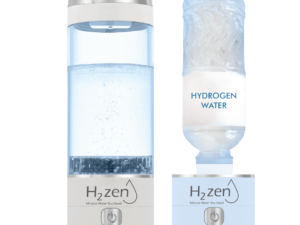What does CFU stand for? – Probiotic CFU Count
Ever wonder why some probiotic supplements boast 50 billion microorganisms while others list just 2 billion? That mysterious number on every bottle—often followed by “CFU”—holds the key to understanding a product’s potential effectiveness. These tiny organisms play a big role in gut health, immune function, and overall wellness.
The term colony-forming unit measures live, active bacteria in each serving. Higher counts don’t always guarantee better results, though. Factors like strain diversity, survival rates, and personal health goals matter just as much as the numbers themselves.
Manufacturers list CFU counts to indicate potency, but shelf life and storage conditions affect how many bacteria remain active by consumption time. Smart shoppers look for products with expiration-date guarantees rather than just high initial numbers.
Key Takeaways
- CFU measures live microorganisms capable of forming colonies in the gut
- Typical counts range from 2 billion to 75 billion per serving
- Higher numbers don’t automatically mean better health outcomes
- Strain selection and survivability are equally crucial factors
- Storage conditions significantly impact actual bacteria viability
Choosing the right probiotic involves more than comparing labels. This guide will help decode what really matters for digestive wellness and how to match supplements to individual needs.
Understanding What Does CFU Stand for?
Probiotic labels often feature numbers like 20 billion or 50 million. These figures represent live microorganisms ready to support gut health. But how do scientists measure these tiny helpers?
Definition and Key Concepts
Colony forming units (CFU) count the living bacteria or yeast in each dose. Unlike dead cells, these active microorganisms multiply to form visible clusters under lab conditions. This measurement ensures only viable strains contribute to digestive benefits.
Colony Forming Units in Probiotic Supplements
A 10 billion CFU label means ten billion live bacteria reach your system. However, storage temperatures and expiration dates affect actual numbers. Products with delayed-release capsules often maintain higher viability through stomach acid.
| CFU Range | Common Uses | Storage Tips |
|---|---|---|
| 1-10 Billion | Daily maintenance | Room temperature |
| 20-50 Billion | Targeted support | Refrigeration needed |
| 50+ Billion | Short-term therapy | Check expiration dates |
Different strains work best at specific counts. For example, Lactobacillus thrives in lower ranges, while Bifidobacterium often requires higher numbers. Always pair CFU counts with strain diversity for optimal results.
The Science Behind Colony Forming Units
Long before probiotics lined pharmacy shelves, 17th-century scientists peered through crude microscopes at mysterious “animalcules.” These early observations sparked a revolution in understanding microscopic life—a journey that would shape modern probiotic science.
Historical Microbiology Methods
Researchers initially counted bacteria using broth-filled vials. They’d watch cloudy formations develop over time—a sign of multiplying microorganisms. But this method couldn’t distinguish live cells from debris.
The breakthrough came with agar plates. Scientists discovered that pouring bacterial samples onto this jelly-like substance allowed distinct colonies to form. Each visible cluster represented a single viable microorganism that had multiplied.
- Early counting required manual microscope analysis
- Nutrient broths couldn’t isolate individual strains
- Agar provided a stable surface for colony growth
Modern laboratories still use this principle. Samples are diluted, spread on plates, and incubated for 24-72 hours. Technicians then count the bacterial colonies—each dot representing millions of descendants from one original cell.
This time-tested method explains why CFU counts remain crucial in probiotic research. Unlike DNA tests that detect dead bacteria, CFU measurements confirm living microorganisms capable of supporting gut health.
Interpreting Probiotic CFU Count and Its Benefits
The numbers on probiotic packages tell a story of microscopic allies working to balance your system. While products display counts from one billion to over 100 billion per serving, most quality options contain 1-10 billion live cultures. Matching these figures to personal needs creates opportunities for lasting digestive improvements.
Impact on Gut Health and Digestion
Proper bacterial populations help maintain intestinal harmony. Supplements with 3-5 billion CFUs often ease occasional bloating, while higher counts may address specific concerns. Consistent use supports smoother digestion and regular bowel patterns.
Effective strains multiply once they reach the gut. This natural growth means initial CFU counts don’t need to overwhelm the system. Lactobacillus and Bifidobacterium thrive best when introduced gradually.
Benefits Beyond the Numbers
A balanced gut does more than process food efficiently. Research shows these microorganisms:
- Enhance absorption of key nutrients like B vitamins
- Strengthen immune responses against seasonal threats
- Support mental clarity through gut-brain connections
Many users report improved energy levels when their probiotic potency aligns with dietary needs. Noticeable changes in skin health or stress management often signal thriving bacterial colonies.
Remember—higher numbers aren’t always better. The right CFU count acts as a launchpad, letting beneficial strains establish themselves without causing digestive upheaval.
Choosing the Right CFU Count for Your Health Needs
How do you match tiny bacteria counts to unique bodies? The ideal CFU count depends on age, health status, and individual tolerance. What works for a college athlete might overwhelm a newborn’s delicate system.

Age and Sensitivity Considerations
Infants under six months thrive best with 1-2 billion CFU per serving—their small bodies and developing guts can’t handle higher amounts. Toddlers (6 months–3 years) typically need 2-6 billion, while children over three benefit from 4-25 billion.
Adults aren’t exempt from lower-dose needs. Those with sensitive digestion, autoimmune conditions, or inflamed intestines often respond better to conservative counts. Starting low and gradually increasing helps avoid discomfort.
Optimizing Dosage with Prebiotics
Pairing probiotics with prebiotic fibers creates a power duo. Inulin from chicory root or XOS (xylooligosaccharides) feeds good bacteria, helping them multiply naturally. This synergy lets people use lower CFU supplements effectively.
“Combining prebiotics with targeted strains reduces the need for ultra-high counts,” notes a Kuala Lumpur nutritionist. Fermented foods like tempeh or kimchi also support this balance, offering Malaysians culturally familiar options.
Myths vs. Research in Probiotic CFU Effectiveness
Probiotic shoppers often face conflicting claims about bacterial counts. Let’s clear the air with science-backed insights about what truly matters for gut health.
Separating Fact from Fiction
Many believe higher CFU counts guarantee superior results. Research shows this isn’t always true. While 50+ billion units help restore gut balance after antibiotics, daily users rarely need such intense doses.
Products with extreme counts sometimes trigger bloating or loose stools in sensitive individuals. A 2023 study found 20-30 billion CFUs worked better than 50 billion for managing occasional digestive discomfort in Malaysian adults.
| When Higher Counts Help | When Lower Counts Work | Key Considerations |
|---|---|---|
| Post-antibiotic recovery | Daily maintenance | Start low, increase gradually |
| Acute digestive issues | Sensitive stomachs | Match strains to health goals |
| Short-term therapy | Children & elderly | Check survivability technology |
Strain selection proves more crucial than raw numbers. A 10 billion CFU product with clinically tested strains often outperforms generic high-count options. Look for combinations like Lactobacillus rhamnosus GG and Bifidobacterium lactis – proven allies for immune and digestive support.
Smart shoppers prioritize:
- Survival-enhancing capsules
- Third-party testing certificates
- Expiration-date guarantees
Remember – effective probiotics balance quantity with quality. The right strains in proper amounts create lasting results without overwhelming your system.
Contacting Wellness Group for Probiotic Guidance
Navigating probiotic choices becomes simpler with expert support. Wellness Group offers personalized consultations to match supplements with unique gut health needs. Their team helps decode bacterial strains and ideal colony counts for different systems.

Business Hours and Availability
Consultants are ready Monday-Friday (9:30 AM-6:30 PM) and Saturdays (10 AM-5 PM). Sunday closures let staff recharge for quality service. Weekend hours help busy Malaysians discuss factors like travel schedules or dietary changes.
Walk-ins welcome at their KL headquarters. Virtual appointments suit those preferring home consultations. The team analyzes:
- Current gut microbiome status
- Existing supplement routines
- Health goals requiring bacterial support
Instant Support Through WhatsApp
Message +60123822655 for quick answers about probiotic options or CFU numbers. Share symptoms or product photos for tailored advice. Responses typically come within 2 business hours.
This service helps:
- Compare shelf-stable vs refrigerated probiotics
- Understand strain-specific benefits
- Adjust doses for sensitive systems
Wellness Group simplifies the science behind bacterial balance. Their guidance transforms confusing numbers into actionable gut health strategies.
Conclusion
Understanding Colony Forming Units transforms how we approach probiotic selection. These measurements reveal live bacteria ready to colonize the gut—not just total microorganism numbers. While higher counts may seem impressive, smart choices balance potency with strain diversity and shelf-life reliability.
Effective supplements match individual needs rather than chasing extreme figures. A 50 billion count might help recover from antibiotics, but many thrive on smaller, consistent doses. Storage conditions and expiration dates ultimately determine how many viable units reach your system over time.
For those exploring daily probiotic use, focus on products with clinically tested strains and survivability guarantees. Remember—true gut health stems from quality colonies establishing themselves, not temporary bacterial floods. Let science guide your choices, not marketing hype.
FAQ
What does CFU mean in probiotic labels?
CFU stands for colony-forming units, a measurement used to estimate the number of viable bacteria or yeast in a probiotic supplement. Higher CFU counts indicate more live microorganisms per serving, which can influence their potential benefits for gut health and digestion.
Is a higher CFU count always better?
Not necessarily. While higher CFU numbers suggest more microorganisms, effectiveness depends on strains, storage conditions, and individual needs. Research shows some benefits peak at specific counts, and excess CFUs may not improve results for everyone.
How do CFU counts affect digestion?
Adequate CFUs help probiotics survive stomach acid and reach the gut, where they support nutrient absorption and balance. Products with 10–50 billion CFUs per serving often suit daily needs, but those with sensitivities or specific conditions might require tailored amounts.
Can probiotics lose CFU potency over time?
Yes. Factors like moisture, temperature, and shelf life impact viability. Look for expiration dates and storage instructions to ensure live cultures remain active. Some brands use stabilization technologies to maintain CFU counts until consumption.
Should children take probiotics with lower CFUs?
Often, yes. Younger individuals or those new to probiotics may benefit from starting with 1–5 billion CFUs to avoid mild side effects. Consulting a healthcare provider helps match CFU counts to age, health status, and dietary requirements.
Do prebiotics enhance CFU effectiveness?
Prebiotics, like fiber-rich ingredients, act as food for probiotics. Combining them may improve survival rates of colony-forming units in the gut, amplifying benefits such as immune support or reduced bloating.
How can I verify a product’s CFU claims?
Reputable brands provide third-party testing results confirming CFU counts at production and expiration. Certifications from organizations like USP or NSF offer additional assurance of label accuracy and quality.
Where can I get personalized probiotic advice?
The Wellness Group offers guidance on choosing CFU counts and strains. Contact them via WhatsApp at +60123822655 during business hours for tailored recommendations based on health goals and lifestyle.

Khloe Tan
Khloe Tan is a Certified Nutritionist, Corporate Wellness Trainer, and Holistic Health Specialist with over 15 years of experience in the health and wellness industry. She has delivered more than 100 talks nationwide, inspiring and educating diverse audiences on nutrition, lifestyle, and sustainable wellness. Her work has positively impacted over 3,000 lives, and she continues to champion holistic approaches to well-being in both corporate and personal settings.





